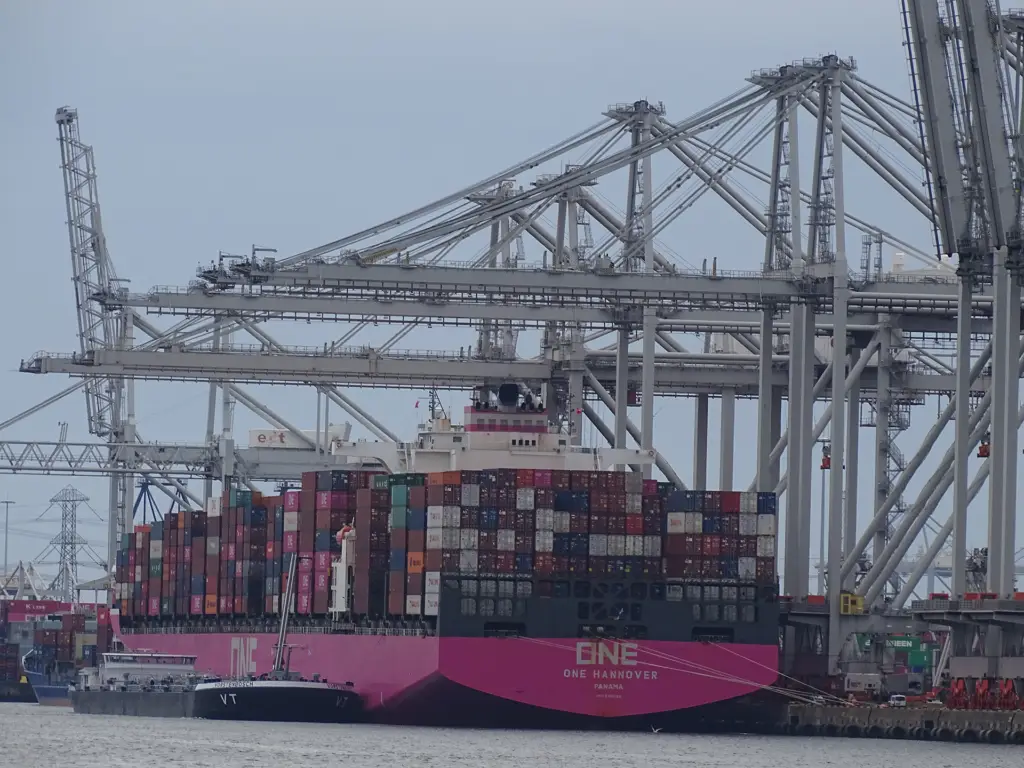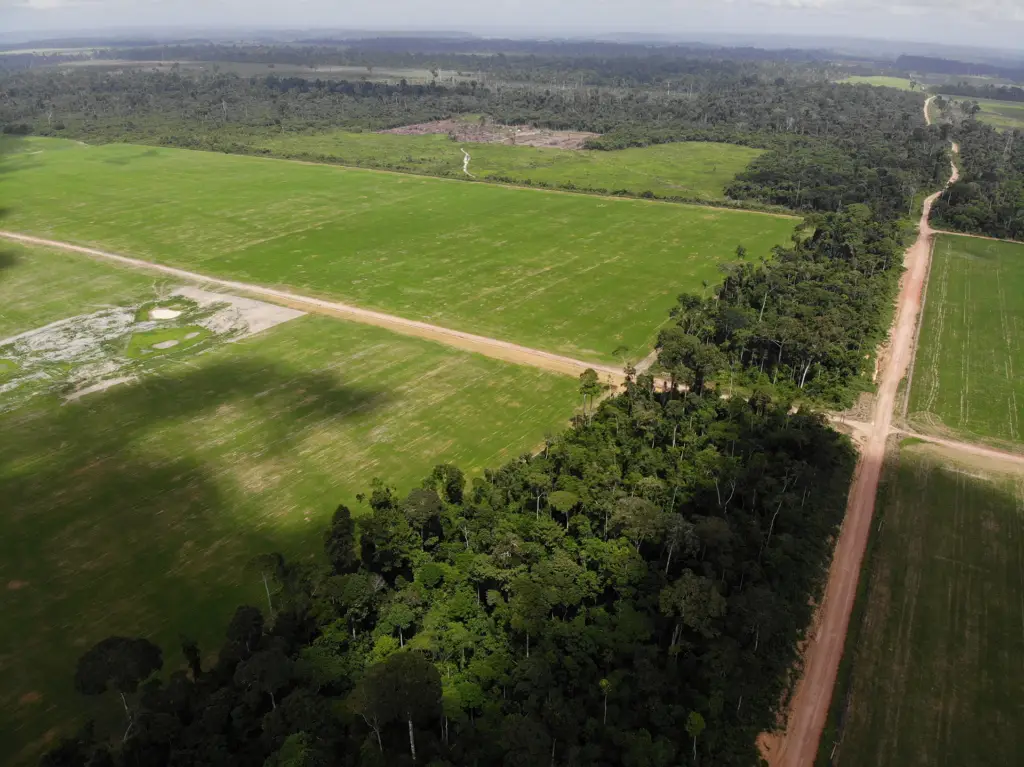1. Introduction
In November 2021, the Commission proposed a new regulation to curb deforestation and forest degradation driven by the European Union (EU). In a bit more than a year of negotiations, in December 2022 the European Parliament and Council reached a preliminary political agreement on a text that – with some changes – then became the EU deforestation-free products regulation 2023/1115 (EUDR) adopted in May 2023.
The EUDR entered into force on June 29, 2023, with an 18-month implementation period for most stakeholders. From the perspective of global value chains (GVCs), the EUDR can be described as a unilateral regulatory intervention to increase the standards of EU and global trade by introducing minimum criteria to access the EU market. Yet, its implications go beyond this: they characterise an intervention that underscores GVCs as contextually local and multi-territorial and sheds light on how territories are influenced by practices, actions and dispositions at various stages of global production.
All actors involved agree that the implementation months will involve significant actions to be taken. The EU will perform risk assessments, define content, and develop potential guidelines. Traders and operators will have to address their obligations and adjust procedures, while national authorities bear the responsibility for implementation. Academics and civil society organisations will be looking at the local and systemic implications, raising questions and highlighting spaces of improvement. In particular, 2024 is a pivotal year to address uncertainties and challenges tied to the regulation, highlight the global nature of combating deforestation, climate change, and biodiversity loss. The next months – characterised by elections in the EU Parliament – appear an opportunity for academics to share critical insights on the link between territories of extraction and territories of consumption.
To get the ball rolling, this blog written by members of the EPICC project provides an overview of the EUDR requirements and our preliminary research findings, serving as an introduction to upcoming publications delving deeper into these aspects.
2. Governing deforestation and biodiversity loss
The EU stands out as a major global consumer of deforestation-led products1. In recent years, the EU’s impact on deforestation and biodiversity loss has been increasingly denounced by civil society actors and acknowledged at EU policy-level, as well as in non-binding statements at the international level such as the New York and Amsterdam Declarations. The convergence between regional and international agenda is visible in a number of EU initiatives promoting trade sustainability and reducing the EU’s environmental impact, which are promoted by EU institutions as part of its international commitments including those outlined in the Paris Agreement and the 2030 Agenda for Sustainable Development2.

With regards to the EUDR, the regulation is part of a broader EU plan of actions to tackle deforestation and forest degradation, as first outlined in the 2019 Commission Communication on Stepping up EU Action to Protect and Restore the World’s Forests. This pledge was subsequently confirmed by the European Green Deal, the EU Biodiversity Strategy for 2030 and the Farm to Fork Strategy. Hence, the EUDR follows the same pattern in terms of legitimacy and ideas of ‘greening’ GVCs observed in previous EU policy and regulatory interventions. However, as it will be shown at the end of this blog, it introduces few significant innovations in the way of acting.
3. Scope of the regulation
The EUDR is built around the combination of traceability and due diligence requirements for traders and operators that place on the EU market or export from the EU seven commodities (cattle, cocoa, coffee, oil palm, rubber, soya, and wood) and some related products (e.g., beef, furniture, pallets, chocolate, etc.) as identified by their harmonised system (HS) tariff code in Annex I of the EUDR. Via the implementation of some procedural requirements – discussed below – the EUDR aims at ensuring that all products introduced on the EU market or that are exported from the EU adheres to the legal standards in the country of production, are free from deforestation, and are not linked to forest degradation. Each of the three requirements, along with the procedural steps to be taken, requires some reflection. In this blog we touch upon them, whereas in future blogs we provide a more detailed discussion and critical assessment.
3.2. Who has obligations under the EUDR?
The EUDR is applicable to:
- Operators, as per the EUDR, are “any natural or legal person who, in the course of a commercial activity, places relevant products on the EU market or exports therefrom” (Art. 2.15). Hence, in the EUDR context, operators generally refer to commodity traders engaged in the buying and selling of goods along the supply chain. Operators placing specific products on the EU market must issue a due diligence statement to competent authorities, including details from Annex II for the relevant products and a declaration confirming the execution of due diligence with either no or only negligible risk found (Art. 4).
- Traders, as per the EUDR, are defined as “any natural or legal person in the supply chain other than the operator who, in the course of a commercial activity, makes relevant products available on the market” (Art. 2.17). This encompasses wholesalers, retailers, large supermarkets, and other entities involved in handling and distributing products in the supply chain after a market introduction by ‘operators.’ The EUDR requires ‘SME traders’ to store and share supply chain information, while ‘non-SME traders’ are subject to the same requirements as operators (Art. 5).

What our research suggests is a lack of clarity in the definition of traders and operators, with stakeholders referring to the previous EU Timber Regulation as a term of reference but also providing contradictory answers when asked to indicate traders and operators. Similarly, it is important to highlight the implications of the decision to exclude responsibility and liability of the maritime carriers (bulk or container ship owners and operators) involved in physical distribution, transport, and logistics. Although these commodities would not be exported or imported without them, it is not them that have to exercise due diligence and provide transparency. Moreover, the regulation only mandates compliance for companies introducing products listed in Annex I, excluding those marketing differently categorised processed products like biscuits or foods containing relevant commodities3. However, even though due diligence does not apply to them, they may still face negative impacts from the regulation’s implementation with regards to their purchased and stocked commodities as well as the reputational risk of selling goods associated with illegality, deforestation, or forest degradation. As such, the obligations may extend to them in an indirect way, causing administrative concerns but also increasing the possibility for civil society organisations to denounce incompliance.
3.3. What are the due diligence obligations?
The regulation’s theory of change relies on the enforcement of a mandatory supply chain due diligence system. This system encompasses comprehensive traceability, minimum due diligence criteria, and transparent compliance standards for operators and traders. Traders and operators must provide a due diligence statement with specific information, outline conducted risk assessments, and detail the measures taken for risk mitigation. Key requirements for due diligence include:
- The collection of specific information, as outlined in Article 9:
- Operators and non-SME traders must provide detailed geographic coordinates, specifically latitude and longitude, for all land plots supplying commodities (i.e., traceability requirement). Polygon representations are required for parcels exceeding 4 hectares and used for producing commodities other than cattle, excluding most small-scale farmers. The EUDR however prohibits a mass balance approach; instead, it mandates tracing each individual unit of the relevant commodity to the specific land plot. Uncertainty persists regarding how the EU’s traceability requirements will be ensured and aligned with existing national systems.
- Operators and non-SME traders must gather information confirming compliance of relevant commodities with the country’s legislation where they were produced.
- Article 10 and 11 mandate operators and non-SME traders to conduct a risk assessment. If a compliance risk is identified, they must establish mitigation procedures and measures to minimise deforestation risks to a level deemed ‘negligible.’ Human rights considerations in the country of production must be factored into the risk assessment, focusing on the presence of measures aimed at reducing the likelihood of violations rather than the violations themselves.
The intensity of traders and operators’ obligations will depend on the risk level assessed through the Commission’s ‘central database of risk assessments’. This ranking should have been realised within 18 months of the regulation taking effect, so delay is to be foreseen. The country risks assessment into a key aspect of the EUDR, and will be composed of the creation of a benchmarking system (Art. 29) and the characterisation of producing countries into ‘low,’ ‘standard,’ or ‘high-risk’ categories. The benchmarking system will specifically determine the level of due diligence for operators and traders: more demanding requirements apply to commodities from ‘high’ risk countries, while ‘low’ risk countries benefit from simplified due diligence under Article 13. The risk classification considers deforestation, forest degradation rates, agricultural land expansion for relevant commodities, production trends, and may include factors like human rights laws and protections for indigenous peoples and local communities.
3.4. Who has the obligation to guarantee the respect of the regulation?
According to the EUDR, each Member State must establish a competent authority with adequate resources responsible for verifying operators and traders’ compliance. Authorities are expected to conduct checks using a risk-based approach at the moment of introduction of products in the EU market and their export. The three-tier country benchmark allows member state authorities to impose varying checks on operators based on the risk level: 9% for high-risk, 3% for standard-risk, and 1% for low-risk countries. Although the regulation specifies transparency and accessibility requirements, it is evident that the funding, structure, governance mechanisms and seriousness of each MS will affect the effectiveness of implementation of the regulation. For that, the decisions adopted by each MS, including in the funding of the implementation, and the overall monitoring by the European Commission need to be further investigated and brought to the public attention.
4. Reflections and considerations on the EUDR
The EUDR is hailed by EU actors as a crucial tool in the fight against climate change and biodiversity loss. Similarly, many EU stakeholders that we interviewed considered it as a groundbreaking initiative, positioning deforestation and biodiversity conservation at the forefront of EU objectives, labelling it as a ‘new green standard’ and described as ‘ambitious legislation’ to combat deforestation. The fact that the significant link between EU consumption and global deforestation dynamics is underscored in the preamble of the regulation, must be welcomed as a positive note. However, the unilateral nature of the intervention, the content, the process and the implications in terms of global food systems, ecological dynamics and local socio-economic contexts must be thoroughly scrutinised. Even before the regulation enters into force, there are evident challenges and shortcomings in the EUDR, particularly in the process, expected outcomes, and its territorial ramifications. These challenges extend to the narratives used by EU stakeholders and the universalisation and normalisation of the EU perspective.
4.1. A truly consultative process?
The 2021 impact assessment has drawn criticism for its methodology and findings. It is notably faulted for vague terms of reference, data discrepancies4, a lack of a clear decision-making process, and an unclear methodology. Non-governmental organisations have also highlighted the assessment’s insufficient consideration of smallholders’ concerns5. Simultaneously, there has been a lack of clarity and information on the EUDR throughout the decision-making process, particularly for peasants, farmers, and smallholders in producer countries6. Moreover, despite claiming significance with over 1,193,652 submissions, the online public consultation launched in September 2020 raises questions about its true level of participation. Over 90% of responses came from pre-filled questionnaires distributed by EU-based NGOs, mainly targeting EU consumers. This challenges the characterisation of the consultation as a citizen petition for a new EU law on deforestation-free products, considering how the questionnaire was presented to and answered by respondents.
Several producer countries also expressed concerns that the public consultation did not meet expectations for the EU’s engagement and dialogue with third countries. Interestingly, despite the EU’s official stance on consultations and engagements ensuring broad legitimacy, some actors interviewed suggested that the EUDR was not intended to be a participatory process. This raises questions about the role of GVCs as spaces of global governance, indicating that these EU actors may not see the lack of transparency and stakeholder involvement as a significant concern in their efforts to combat deforestation in producer countries.
4.2. What is a good deforestation-free GVC regulation and who defines it?
The EU’s adoption of the FAO’s definitions for forest, deforestation, and forest degradation, while justified by EU actors as aligning with global standards, presents drawbacks. Indeed, the rationale, based on encompassing all forest categories, simplifying rule implementation, and promoting consistency with existing EU regulations, may not align with diverse understandings of these terms on the ground. The definitions might also not match (legal) definitions used in producer countries and may overlook other forms of interactions with forests such as intergenerational knowledge transfer and cultural and religious values. Relying on quantitative parameters outlined in Article 2.4 of the regulation may also neglect the complex web of social and ecological relationships that surround ecosystems and forests, dismissing their biological, cyclical, and cultural diversity7. Lastly, this approach could exclude ecosystems like the Brazilian Savannah named Cerrado (79 million hectares unprotected) and Chaco (32 million hectares unprotected) that fall outside the narrow definition.
4.3. The temporal benchmark
The Commission justified choosing January 1, 2021, over the European Council’s proposed 2023 date, to align with SDG target 15.2 and international standards. EU stakeholders rationalised this decision arguing that focusing on products introduced after this date simplifies compliance and avoids negative impacts on smallholders in third countries. The temporal benchmark, however, presents drawbacks. It does not align with stricter national environmental laws and measures, potentially allowing some national actors to advocate for weaker requirements, as seen with the soy moratorium in Brazil. Additionally, introducing the cut-off date without measures to compensate for historical deforestation associated with EU consumption may be inadequate in addressing the root causes of deforestation and conflicts over land use. Civil society organisations also argue that it might reward producers engaged in deforestation before that date and undermine pre-existing initiatives in some countries.
4.4. The implementation of the regulation
The implementation of the law brings challenges and questions similar to the process. The benchmarking system raises uncertainties regarding participation, criteria, and benchmark. Several areas still lack clarity, such as the methodology for risk assessments and the utilisation of data from producing countries. Controversy also surrounds stakeholder participation, questioning whether diverse voices from the ground or formalised national stakeholders will take precedence. In particular, the rush in fulfilling the EUDR requirements, especially the legality requirement, may significantly impact local processes, particularly the struggles around land by indigenous people, campesinos, and other communities challenging imposed legality and boundaries. Lastly, the results of this benchmarking system also give rise to some questions in terms of potential shifts in EU trade towards ‘low risk’ producer countries from ‘high risk’ producer countries.

The relationship between the EUDR and private environmental and social certification systems is another conflicting area. The EUDR acknowledges that certification schemes can be used by supply chain members to help their risk assessment, but cannot be substituted (Art. 10.2). This raises questions about the future of private certification and sustainability claims, potentially becoming less appealing to market actors aiming for deforestation-free products. Concerns extend to the inconsistency between the EUDR’s cut-off date and certification schemes’ internal cut-off dates, posing regulatory burdens on private companies and potentially causing competition and fairness issues among their members.
4.5 The privatisation of legal requirements?
As mentioned above, the regulation requires traders and operators to assess the compliance with the relevant legal framework as part of their due diligence process. For some, the ‘legality’ requirement is a positive step forward, to the point that some civil society organisations and environmental groups stressed the importance of a broad list of legal references and the inclusion of key regulatory frameworks such as land rights, indigenous rights and international human rights obligations. However, the introduction of these references in the last reading of the text should not be celebrated as a success per se. On the contrary, it has to be interpreted in the context of a privatised approach towards legal compliance, where it is the traders and operators – often from far away the territories where the commodities are produced – who have to assess and certify the legality of production. This can have perverse effects depending on the source of the legal information and its interpretation, but even more depending on the way in which ‘legality’ is constructed and defined. In Brazil, for example, the Rural Environmental Registry (CAR, acronym in Portuguese) is the system where land titles are communicated and recognised. For decades, indigenous communities and civil society organisations have denounced that the Registry is used by private enterprises to register plots of land that are reclaimed by indigenous people. If CAR was to be used by traders and operators, and by the MSs in their assessment of legality, to define legal occupation, the risk would be that of crystallising occupation and negatively impacting the territorial resistance.
5. Conclusion and broader considerations
GVCs establish material and immaterial connections between diverse places, histories, and cultures, posing new challenges for unilateral regulatory measures like the EUDR to recognise and integrate the complexity of global capitalism and its social and environmental dynamics. For EPICC, attention should be brought not only on the technical aspects of the EUDR but also on broader considerations arising from the use of unilateral trade governance mechanisms. From 2024 onwards, a review of the regulation will occur, addressing unresolved issues such as the inclusion of other wooded land and commodities, expanding the regulation’s scope to cover additional ecosystems and possibly the financial sector. Not earlier than in five years, a comprehensive review will look at other issues, such as the impact of the EUDR on indigenous communities. Both the implementation and review processes provide opportunities for intervention and adjustments, underscoring the importance of science-based support in policymaking.
This blog concludes by highlighting these broader considerations, which are pertinent not only for the EUDR, but also for future policy tools like the Carbon Border Adjustment Mechanism and other mandatory conducts for entities placing goods in the EU. Further elaboration on these aspects will be provided in upcoming publications due to their significant importance:
- Sustainability is not a one-dimensional concept;
- The environment, particularly nature and forests, is not a resource for management and trade. Biodiversity should not be seen as separate and external to society. Forests are not merely providing to society, but they are interwined with forms of social diversity that regenerate ecological processes. In that sense, it would not be enough to add a human rights component to the regulation, but the whole framework should be rethought.
- The implementation of the regulation should be scrutinised ‘from below’ and in light of the implications that it may have on historical, present and future claims for land and access to natural resources.
- GVCs governance should not assume that farmers and peasants in the South are inevitably providers of raw materials for GVCs, leading to unequal value distribution and contributing to high rates of local food insecurity and instability.
- The EU should not regulate global dynamics without adequately addressing its historical role in the ecological breakdown that it is willing to amend, and certainly cannot build a ‘green level playing field’ without adequately addressing its common but differentiated responsibilities.
- Simon L. Bager, U. Martin Persson, and Tiago N. P. dos Reis, “Eighty-Six EU Policy Options for Reducing Imported Deforestation,” One Earth 4, no. 2 (February 19, 2021): 289–306. ↩︎
- For examples, see: 2021 Glasgow Leaders’ Declaration on Forests and Land Use; Communication from the Commission: Stepping up EU action to protect and restore the world’s forests (23 July 2019); EU Forest Strategy; EU 2020 Biodiversity Strategy; EU Conflict Minerals Regulation (2017) in force since 1 January, 2021; EU Timber Regulation (EUTR); Forest Law Enforcement and Governance (FLEGT) Action Plan and related voluntary partnership agreements (VPAs) with producer countries. ↩︎
- European Parliament, “Parliament adopts new law to fight global deforestation”, Press Release of 19 April 2023, available at: https://www.europarl.europa.eu/news/en/press-room/20230414IPR80129/parliament-adopts-new-law-to-fight-global-deforestation ↩︎
- Pendrill, F., Persson, U.M. and Kastner, T., Flawed numbers underpin recommendations to exclude commodities from EU deforestation legislation, Focali Brief No 2021:02, 2021, Gothenburg ↩︎
- Fair Trade Advocacy Office (FTAO) , “Deforestation-free supply chains, available at: https://fairtrade-advocacy.org/our-work/eu-policies/sustainable-and-deforestation-free-supply-chains/ ; Institute for European Environmental Policy, “Securing the position of smallholders in zero-deforestation supply chains”, available at: https://ieep.eu/publications/securing-the-position-of-smallholders-in-zero-deforestation-supply-chains/
↩︎ - For EPICC, smallholders are understood as farmers who work small plots of land, mostly less than two hectares, see Ferrando, T., and Mpofu, E., “Peasants as Cosmopolitan Insurgents”, (2022): 96. ↩︎
- World Rainforest Movement, “Deceit and destruction behind FAO’s forest definition”, 21 March 2018, https://www.wrm.org.uy/publications/deceit-and-destruction-behind-faos-forest-definition ↩︎

